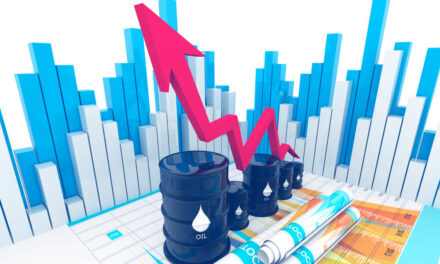I’ve been talking about how it makes sense to plan for an economic downturn — even if it doesn’t happen or the effects are mild.
And that means looking for mega trends with recession-fighting power.
Gross domestic product was lower in both the first and second quarters, meeting the technical definition for a recession. But the National Bureau of Economic Research (NBER), the folks responsible for making the call, haven’t made it official yet. Continued strength in the labor market and high consumer demand — despite soaring inflation — make it awkward.
With the yield curve inverted, commodity prices dropping and the housing market slowing down, I think there’s a real possibility that the economy soon deteriorates to the point that NBER rings the alarm.
That’s why it’s prudent to prepare. I’m optimistic for the future, but I’m cautious about the potential for a recession.
As a quantitative trader, I let the data guide my decisions. What I “think” or “feel” isn’t relevant.
History shows that certain pockets of the market are more resistant to recessions than others. Their profits are less affected by the ups and downs of the economic cycle.
When the economy gets shaky, investors rotate into those defensive sectors.
It makes sense to look for opportunities in sectors with a better chance of holding their ground.
And one of those is health care!
Why Health Care Is Recession-Proof
Most demand for health care is inflexible.
Sure, certain medical expenses can be indefinitely postponed, such as plastic surgery or other elective procedures. And some patients might put off routine doctor’s visits when their budgets are tight. But most trips to a medical facility have a sense of urgency about them. There is a risk … or something hurts!
There’s also a long-term mega trend at work. America is aging, and the older we get, the more medical care we consume.
The pandemic makes the numbers from 2020 to the present a little messy, so I pulled data from 2019.
It confirms what you would expect: Americans aged 55 and older make up about 30% of the population yet are responsible for 56% of all health care spending. Those 65 and older make up 17% of the population yet consume 35% of that total.
So you have recession resistance, which should keep demand stable in the short term. There are also excellent demographic mega trends boosting the long-term prospects.
That’s great. But there’s another angle here too!
The Pandemic Hit the Medical Workforce Hard
We’re facing a major staffing shortage across the entire industry — particularly among nurses. They are burned out — 90% have at least considered leaving the profession, and many already have. A study from earlier this year found that the health care profession as a whole had lost about 20% of its workforce, including 30% of nurses!
So we have increasing demand for a shrinking supply of people qualified to deliver the service. That’s a perfect storm brewing, and it’s one that will create all kinds of opportunities.
The field is ripe for a wave of labor-saving automation. No, we won’t have robot nurses … at least not anytime soon. But you can bet that artificial intelligence will help monitor patients and make more efficient use of nurses’ time.
But we still need people. Nursing is a hands-on profession. You need people to administer tests, insert IVs, take blood samples… There’s no substitute for people, and there won’t be for a long time.
This ties in perfectly to my recommendation in the October issue of Green Zone Fortunes. I recommend a company that is busy filling this need, and it’s one the highest-rated stocks in my proprietary system.
To see how you can gain access to my latest recommendation and to also learn about another health care mega trend that I believe has the potential to transform the field as we know it, click here to watch my “Imperium” presentation.
To good profits,

Adam O’Dell
Chief Investment Strategist




